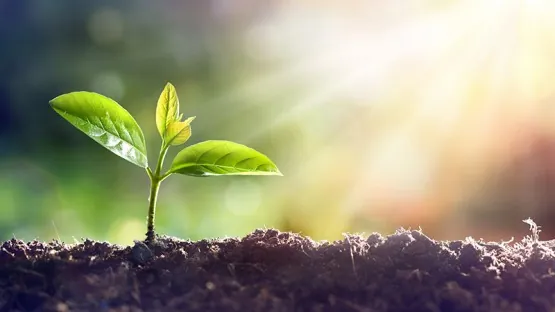
Revolutionary Plant Cell Research: The Future of Biodegradable Materials!
2025-08-25
Author: William
A Vision for the Future: Biodegradable Innovations
Imagine clothing that intuitively adapts to your needs and surroundings, habitats created in the harshest conditions using the power of bacteria, plants, and fungi, or entire buildings that grow organically from living organisms. This intriguing vision isn’t just science fiction; it’s at the forefront of research by scientists at Cornell University, who are pioneering methods to engineer plants and other organisms into biodegradable forms that serve human needs.
Unlocking Plant Growth: The Key to Sustainable Materials
To realize these groundbreaking ideas, researchers first must decode the fundamental mechanics of plant cell walls—an essential aspect of how plants grow. A recent study, published in *Nature Communications*, delves into this subject using the model organism Arabidopsis thaliana, marking a pivotal leap in fusing plant biology with mechanical engineering.
"Understanding how cell walls function in plant development opens the door to engineering plants that can grow into materials with specific shapes and sizes, like biodegradable packaging produced directly by the plant itself," explained Si Chen, a Postdoctoral Fellow at the Engineered Living Materials Institute (ELMI) and lead author of the study.
The Mechanics of Growth: Insights into Cell Walls
The research focuses on the outer layer of plant cells, known as primary cell walls, which play a critical role during growth. Secondary cell walls come into play once growth has halted, providing structural support. This investigation sought to understand the stretching and thinning behavior of primary cell walls as plants grow.
Chen innovated experimental designs to assess the forces needed to stretch these walls and measure the extent to which they thin during elongation. The findings underline the potential to manipulate plant form during their growth phase, setting the stage for durable structures that take shape based on their outer cell walls.
Innovative Modeling: Understanding Mechanical Properties
Furthermore, Chen explored how the growth rate of leaves affects mechanical properties, contrasting rapid growth versus periods of stagnation. She even examined a mutant Arabidopsis known as spiral 2, which grows in a distinctive twisting manner, allowing for a unique look at the deposition of cell wall material.
To visualize these mechanical behaviors, Chen created a model using beams representing cellulose fibers, connected in a diamond shape. This illustrative approach clarified how these connections—critical to the overall structural integrity—react during stretching, bending, and other movements.
A Collaborative Endeavor: Researchers at the Helm
The study's senior co-author, Meredith Silberstein, from the Sibley School of Mechanical and Aerospace Engineering, emphasizes the importance of these connections in future materials engineering. The collaborative work of experts like Silberstein, Chen, and their team blends biomedical insights with engineering strategies paving the way for sustainable technological advancements.
Funding and Support: Paving the Path for Innovation
The research was made possible through support from various institutions, including the National Institutes of Health and the National Science Foundation, highlighting the importance of interdisciplinary collaboration in exploring the future of sustainable materials.









 Brasil (PT)
Brasil (PT)
 Canada (EN)
Canada (EN)
 Chile (ES)
Chile (ES)
 Česko (CS)
Česko (CS)
 대한민국 (KO)
대한민국 (KO)
 España (ES)
España (ES)
 France (FR)
France (FR)
 Hong Kong (EN)
Hong Kong (EN)
 Italia (IT)
Italia (IT)
 日本 (JA)
日本 (JA)
 Magyarország (HU)
Magyarország (HU)
 Norge (NO)
Norge (NO)
 Polska (PL)
Polska (PL)
 Schweiz (DE)
Schweiz (DE)
 Singapore (EN)
Singapore (EN)
 Sverige (SV)
Sverige (SV)
 Suomi (FI)
Suomi (FI)
 Türkiye (TR)
Türkiye (TR)
 الإمارات العربية المتحدة (AR)
الإمارات العربية المتحدة (AR)